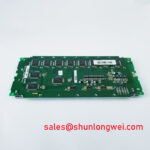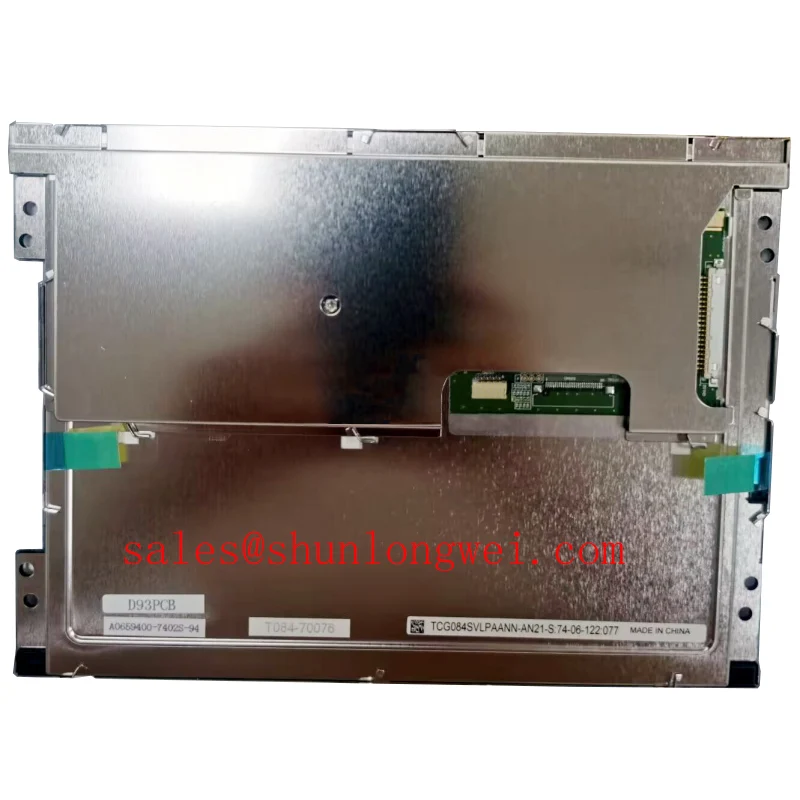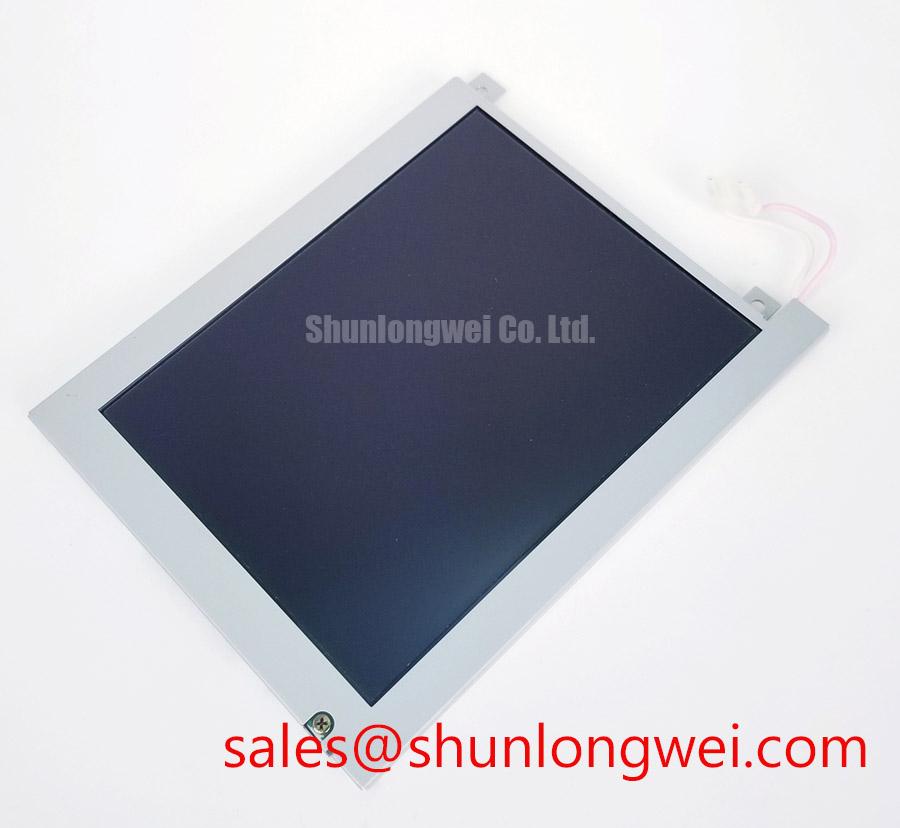## DMF651AN-EW5: Engineering a High-Contrast Monochrome Display for Industrial HMIs
A Technical Overview for Engineering Professionals
The DMF651AN-EW5 is a monochrome FSTN LCD module engineered for applications demanding exceptional clarity and readability in diverse industrial environments. This display delivers a high-contrast, crisp visual interface optimized for presenting critical data, diagnostics, and operator instructions. Its core value lies in providing a robust, easily integrated solution for human-machine interfaces (HMIs) where straightforward, unambiguous information display is paramount. With a 240 x 128 pixel resolution and integrated CCFL backlight, it ensures clear visibility under typical indoor factory and control room lighting conditions. For systems requiring precise and reliable graphical or text-based output, the DMF651AN-EW5 offers a proven and effective display foundation. The module's design prioritizes long-term performance, making it a suitable choice for industrial control panels, medical diagnostic equipment, and test instrumentation.
***
Key Parameter Overview
Decoding the Specifications for System Integration
The technical specifications of the DMF651AN-EW5 are tailored for integration into industrial and specialized equipment. Each parameter is critical for system-level design, from power supply budgeting to enclosure mechanics and ensuring optimal user experience through clear visual performance. Understanding these figures is the first step in a successful design-in process.
| Specification | Value | Engineering Value & Interpretation |
|---|---|---|
| Display Technology | FSTN (Film-compensated Super-twisted Nematic) | Delivers superior contrast and wider viewing angles compared to standard STN technology. This is crucial for HMIs that may be viewed from off-axis positions in a control room. |
| Display Mode | Transflective | Combines transmissive and reflective properties, ensuring readability in both backlit conditions (low ambient light) and high ambient light environments, enhancing versatility. |
| Resolution | 240 x 128 pixels | Provides sufficient detail for displaying graphical user interfaces, diagnostic charts, and multi-line text common in industrial controllers and test equipment. |
| Active Area | 127.16(H) x 67.8(V) mm | Defines the usable screen real estate. This dimension is a key factor in GUI design and mechanical enclosure planning to ensure bezels do not obstruct critical information. |
| Pixel Pitch | 0.53(H) x 0.53(V) mm | The spacing between pixels. A larger pitch, as seen here, contributes to clear, bold characters and graphics, reducing operator eye strain during long shifts. |
| Backlight System | CCFL (Cold Cathode Fluorescent Lamp) | A mature and reliable backlighting technology known for its stable brightness and long operational life, a key requirement for equipment with extended service life expectations. |
| Outline Dimensions | 174.0(W) x 107.0(H) x 11.0(D) mm | Essential for mechanical engineers designing the product chassis. The 11.0mm depth is a critical parameter for integration into space-constrained enclosures. |
| Operating Temperature | 0°C to +50°C | Specifies the reliable operating range for the display. This range is suitable for indoor industrial environments such as control rooms, laboratories, and factory floors. |
For detailed specifications and performance curves, please consult the official product documentation.
Application Scenarios & Value
System-Level Benefits in Industrial Control and Instrumentation
The DMF651AN-EW5 is engineered for applications where data clarity and operational reliability are non-negotiable. Its transflective FSTN technology provides a distinct advantage in environments with variable lighting, a common challenge in manufacturing facilities and field service equipment.
A high-fidelity engineering scenario is its use in a legacy PLC (Programmable Logic Controller) or CNC machine HMI upgrade. The challenge for the design engineer is to replace an aging, dim display without a complete system overhaul. The DMF651AN-EW5's standard parallel interface and 240x128 resolution often match the requirements of these systems, simplifying the integration process. Its FSTN monochrome display provides a significant upgrade in contrast over older STN models, making diagnostics and status messages instantly more readable for operators, which directly translates to reduced error rates and faster troubleshooting on the factory floor. This makes it an optimal choice for extending the life and improving the usability of existing industrial machinery. For applications demanding a different resolution or form factor, the LCM-S01602DSF/B offers a character display solution for simpler data readouts.
Frequently Asked Questions (FAQ)
Technical Clarifications for Design Engineers
What is the primary benefit of the FSTN technology in the DMF651AN-EW5 compared to standard STN?
FSTN (Film-compensated Super-twisted Nematic) adds a retardation film to the STN cell structure. This actively compensates for color dispersion, resulting in a true black-and-white display with significantly higher contrast and a wider, more forgiving viewing cone. For an HMI, this means the displayed information remains clear and legible even when the operator is not directly in front of the screen.
How does the transflective nature of the display benefit its application?
A transflective display functions effectively in a wide range of lighting conditions. In bright light, it reflects ambient light to illuminate the display, making it sunlight readable to a degree. In low light, the internal CCFL backlight provides the necessary illumination. This dual-mode operation is ideal for portable test equipment or control panels used in locations where lighting cannot be controlled.
Is the CCFL backlight user-replaceable?
While CCFL backlights are designed for long life, their eventual replacement depends on the mechanical design of the end product. The DMF651AN-EW5 is built as an integrated module. Field replacement of the CCFL tube itself requires specialized skills and is not typically recommended. The design focus is on providing a long operational lifespan that matches the expected service life of the host equipment.
What are the typical data interface requirements for this module?
This display module typically utilizes a parallel data interface. This means multiple data lines (e.g., 4-bit or 8-bit) are used to transmit pixel information, along with control signals like Read/Write (R/W), Data/Instruction (D/I), and Enable (E). This interface is common in microcontroller-based systems and is well-suited for the data rates required for a 240x128 monochrome display.
Given the 0°C to +50°C operating range, what are the design considerations for use near this range?
When operating near the temperature limits, system designers should ensure adequate ventilation to prevent heat buildup, especially from the CCFL inverter. At the lower end of the range, LCD response time may slow down. It is critical to ensure the end-product's thermal management strategy keeps the module within its specified operating window to guarantee optimal performance and longevity.
Technical Deep Dive
Mechanical Robustness & Environmental Resilience
The DMF651AN-EW5 is constructed with the demands of industrial environments in mind. Its mechanical design features a sturdy metal bezel that frames the display, providing essential rigidity and a secure mounting platform. This bezel is critical for protecting the edges of the glass panel from mechanical stress and shock during installation and operation. The integration of the display panel, driver electronics, and CCFL backlight into a single, relatively slim module simplifies the mechanical design of the host equipment. The specified operating temperature range of 0°C to +50°C defines its suitability for controlled indoor environments, such as factory floors, control rooms, and laboratories. While not designed for extreme temperatures, this range covers a vast majority of industrial HMI applications. The choice of FSTN technology also contributes to visual stability across this temperature range, ensuring consistent contrast for the operator.
Industry Insights & Strategic Advantage
The Role of Monochrome Displays in Modern System Design
In an era dominated by full-color displays, the strategic selection of a high-quality monochrome module like the DMF651AN-EW5 offers distinct engineering advantages. The primary benefit is clarity and focus. For applications in process control, medical monitoring, or test and measurement, the goal is the unambiguous presentation of critical data. A monochrome display eliminates the potential distraction of color, presenting parameters, waveforms, and alerts with maximum contrast and readability. This can be a critical factor in reducing cognitive load on operators and minimizing the risk of misinterpretation in high-stakes environments. Furthermore, monochrome displays with parallel interfaces, like this model, often simplify software development and reduce the processing power required from the host microcontroller, leading to a more cost-effective and power-efficient system design—a key consideration under evolving energy efficiency standards.
From an Engineer's Perspective
The true value of the DMF651AN-EW5 lies in its focused execution. It is not intended to compete with full-color, high-resolution panels; instead, it perfects the core function of displaying essential information with exceptional clarity and reliability. For an engineer tasked with designing a new industrial controller or upgrading a legacy system, this module represents a low-risk, high-reward component. Its straightforward interface minimizes development time, and its robust FSTN display technology ensures the final product will have a clear, readable HMI that stands up to the rigors of its intended environment. It is a testament to the principle that choosing the right tool for the job—in this case, a display optimized for clarity over complexity—is the foundation of solid engineering design.










